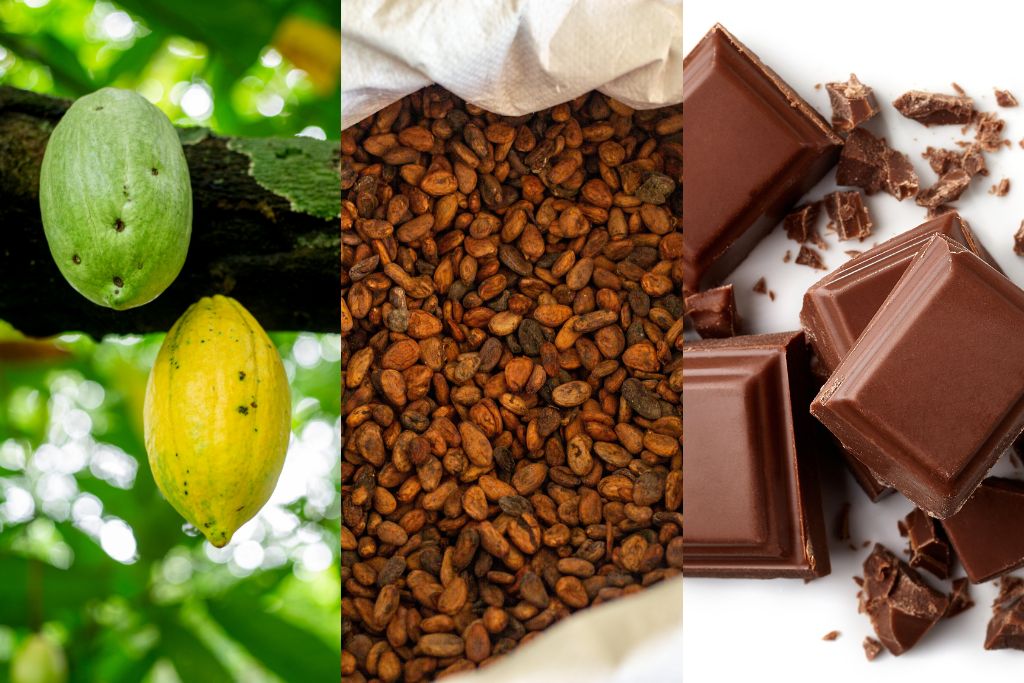
World Chocolate Day: Unveil your favourite chocolate’s rural origin
What's sweeter than opening a box of chocolates? The bitter-sweet confectionery is a favourite snack for most of us, but let's not forget its humble origin as a small bean grown in tropical countries like India.
Cocoa beans are the edible seeds of the cacao tree (Theobroma cacao), which is native to South America. The scientific name, meaning ‘Food of the Gods,’ reflects its significance. Archaeological evidence reveals that the Mayan and Aztec civilisations cultivated cacao over 3,000 years ago, using its powdered form for beverages and even employing it as currency. European colonial expansion in the 15th century marked the beginning of cocoa’s modern history, including its cultivation in India. To overcome its natural bitterness, Europeans experimented with adding sugar or honey, leading to the widespread popularity of this exotic bean across Europe. However, the familiar chocolate bars we know today did not emerge until the 19th century.
The story of chocolate begins with the cacao tree, with its small flowers giving way to elongated pods containing the fruits. The growth of the cacao tree depends on water availability and soil fertility. In India, cocoa cultivation primarily takes place in Andhra Pradesh, Kerala, Karnataka and Tamil Nadu. While the country is a significant consumer of chocolate products, domestic cocoa production falls short of meeting the demands. India imports cocoa beans from larger producers like Ivory Coast and Indonesia.
It takes approximately six months for the pods to reach the harvest stage, during which they develop a yellowish colour. If the harvest is delayed, the colour of the pods may change to red or orange, which is undesirable. Typically, the harvest season concludes in June.
Idukki, located in Kerala, serves as the primary district in the state for cocoa production. Known for its lush tropical forests and farmlands, this hilly district lacks major industries. In the picture, farmer Biju P.B. can be seen harvesting cocoa fruits in his farm in Vellakkayam, a small village situated approximately 40km from the district headquarters Painavu and 70km from Kochi.
Small-scale farmers like Biju rely on market forces to receive fair compensation for their labour. The price of cocoa beans fluctuates due to various factors, including global weather patterns and international commodity trades. Currently, there are high expectations among cocoa farmers in Kerala, as the demand for dried beans is strong, and importers are unlikely to obtain cheaper produce due to reduced output in the largest global producer, Ivory Coast. Presently, farmers in Idukki receive around Rs300 per kg of dried cocoa beans, and this price is anticipated to increase in the upcoming months.
Biju mentions that his farm boasts cocoa trees that are over 20 years old, capable of yielding a bountiful harvest throughout their lifespan. On an average, a tree with moderate-sized fruits can produce approximately 9kg of beans. In addition to sufficient water, these trees require nutrient-rich soil. According to Biju, nothing serves this purpose better than cow dung.
On the cocoa farm, nothing is wasted. The empty pods of cocoa fruit are set aside and utilised as fertiliser. During rainfall, farmers typically protect these empty pods by covering them with tarpaulin, as they have the potential to collect rainwater and attract mosquitoes.
After harvest, the cocoa beans are stored in a large container for a few days to enable fermentation of the pulpy part. This process separates the water content from the beans. Once obtained, the beans are sun-dried before being sold in the market. Drying the beans increases their value as dry beans command a higher price compared to wet ones. Therefore, most farmers opt to dry the beans before selling them.
In Vellakkayam, Idukki, a shop showcases dried cocoa beans, exhibiting their distinctive brown colour. Many global chocolate brands acquire a significant portion of the beans cultivated in this district. To create chocolate, manufacturers roast the dried beans, followed by a process known as winnowing, which involves removing the outer shell of the beans. The resulting nibs are then ground into cocoa mass.
The ecologically sensitive southern Western Ghats can be aptly referred to as the spice box of India. Pepper, cardamom, ginger and nutmeg flourish across vast expanses of land spanning Kerala, Tamil Nadu and Karnataka. In addition to these spices, cash crops like rubber, cocoa, tea, and coffee thrive on extensive tracts of arable land situated at higher altitudes. The tropical rainforests, depicted in the picture, within the Western Ghats harbour an abundance of unique animal and plant species found nowhere else on Earth. Unfortunately, unchecked farming activities in the hills have inflicted severe damage on the region’s biodiversity and caused environmental catastrophes such as landslides. However, in recent years, concerted efforts from government agencies and private organisations have been underway to promote sustainable farming practices in the area.
Also Read | In pictures: Coffee cultivation at an unlikely place
The lead image at the top shows (from left) cacao fruit, cocoa beans and chocolate pieces (Photos by Joyel K. Pious and Shutterstock)
Text and photographs by Joyel K. Pious, a Kerala-based photographer, writer and editor.








